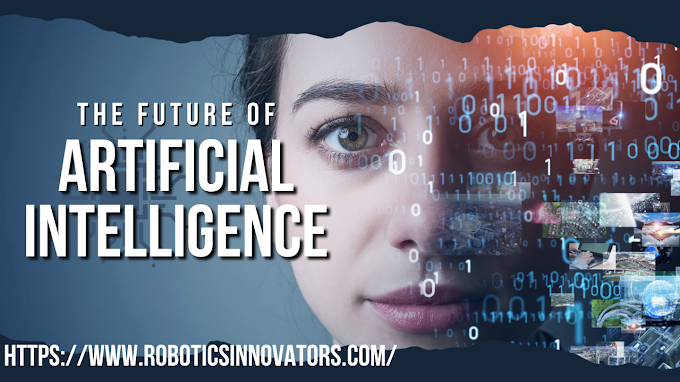Robotics and artificial intelligence (AI) are typically polarized in the minds of people. Many people's perceptions of robots are probably impacted by popular culture, such as television, novels, and comics. Many people have preconceived notions about robots that resemble Star Wars droids, Pixar's Wall-E, or, at the other end of the spectrum, the humanoid AI-enabled robot from the film Ex-Machina that is essentially indistinguishable from humans. Some people tend to underestimate their potential and view them as gimmicks. It is reasonable to presume that people's perceptions of robots and artificial intelligence are slightly different from how they actually operate. There is still much work to be done for researchers in the realms of robotics and artificial intelligence.
New roles for robots in industry and society
Robots are typically thought of as mechanical machines that can do tasks for which they have been programmed and developed. In manufacturing, a wide variety of robots are employed for activities ranging from repetitive motions on an assembly line to those that may be hazardous to people, such as those involving radiation or extremely high or low temperatures. They are often made to be effective and acceptable for the area they work in; hence, their look is seldom humanoid.New roles for robots in industry and society
Robots are typically thought of as mechanical machines that can do tasks for which they have been programmed and developed. In manufacturing, a wide variety of robots are employed for activities ranging from repetitive motions on an assembly line to those that may be hazardous to people, such as those involving radiation or extremely high or low temperatures. They are often made to be effective and acceptable for the area they work in; hence, their look is seldom humanoid.The capacity of AI to quickly digest enormous volumes of data and eradicate human error represents its greatest promise. Both subject-specific knowledge and processing skills are necessary for an AI system to be able to make wise judgments.
AI is a type of software. Currently, computer science has been able to develop specialized software that excels at learning and solving problems within a set of constraints. It is still quite different from what science fiction writers had in mind since, even today, we still know very little about how to simulate human intellect with computers.
AI and robots' combined power
Therefore, what is the relationship between AI and robots? Robotics and AI are separate fields that may or may not coexist. Theoretically, an artificially intelligent robot with great autonomy that can "learn" and optimize tasks is what you get when you mix AI and a robot. The robot's "body" in this scenario is made up of sensors and mechanical components, while AI serves as the "brain" of the machine. Future robots are anticipated to have some kind of artificial intelligence, according to scientists. They will function much more effectively as a result. Such robots will be able to carry out complicated tasks in challenging and unpredictable conditions (for example, on the surface) by applying neural networks and evolutionary algorithms (on Mars or the Moon). AI-enabled robots are extremely uncommon and highly costly, and they now have just a few restricted skills. Robots with artificial intelligence have countless possible uses. They can be employed in the military as well as in industrial, medical, retail, and educational settings.Even more advanced AI is needed for robots designed for close human interaction. Modern humanoid robots can only partially replicate human emotions and facial expressions and recognize speech. Sophia, a humanoid robot made by Hanson Robotics, is one illustration. Sophia is able to replicate human movements and hold condensed talks over predetermined topics. Her designers at Hanson Robotics anticipate using her in customer service, healthcare, therapy, and education. Critics claim that Sophia is simply a glorified chatbot, yet it's entirely possible that in the future, robots with comparable, more sophisticated characteristics may become commonplace.
Leading-edge AI for the COVID-19 study
AI recently discovered a substantial use as a tool for diagnosing illnesses. Researchers at the DAMO Academy of IT giant AliBaba developed an AI-enabled system and trained it using information from more than 5,000 confirmed COVID-19 (coronavirus) infections.There are two uses for the system. The first is to monitor treatment responses in confirmed coronavirus infection patients to determine what is most effective. The second use involves using computed tomography (CT) images of the chest to identify new instances. The AI model makes use of deep learning to analyze infection trends. With a 96% accuracy rate, it can distinguish between individuals with typical viral pneumonia and COVID-19 infections. The AI's processing time is about
A computer can analyze CT images and provide a diagnosis 40 times faster than a human doctor. This AI is presently being used by more than a hundred hospitals in China, and other businesses are also creating comparable diagnostic AI systems.
We may anticipate that as robotics and AI advance, they will have an influence on human life in ways that are currently impossible to foresee. Although completely intelligent robots that can operate on their own still belong in science fiction, these are fascinating times to enjoy working with robots. There is a lack of qualified employees to supervise and maintain robotic equipment in all fields where robots are utilized, including industrial settings, agriculture, transportation, and others. Never before has there been a better moment to start a career.
to get started using these incredible tools and to major in robotics.
Call us at 1-888-553-5542 to speak with a program consultant if you're thinking about becoming a robotics technician, so they can tell you more about our robotics technician program.








.jpg)




